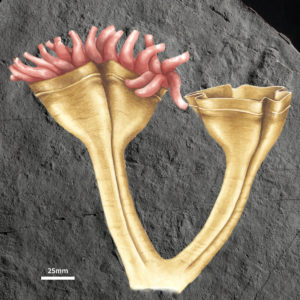by University of Cologne, Sep 26, 2022 in ScienceDaily
Three distinct phases of climate variability in eastern Africa coincided with shifts in hominin evolution and dispersal over the last 620,000 years, an analysis of environmental proxies from a lake sediment record has revealed. The project explores the youngest chapter in human evolution by analysing lacustrine sediments in close vicinity to paleo-anthropological key sites in eastern Africa using scientific deep drilling. The research endeavour included more than 22 researchers from 19 institutions in 6 countries, and was led by Dr Verena Foerster at the University of Cologne’s Institute of Geography Education. The article ‘Pleistocene climate variability in eastern Africa influenced hominin evolution’ has now appeared in Nature Geoscience.
Despite more than half a century of hominin fossil discoveries in eastern Africa, the regional environmental context of the evolution and dispersal of modern humans and their ancestors is not well established. Particularly for the Pleistocene (or Ice Age) between 2,580,000 to 11,700 years ago, there are no continuous high-resolution paleo-environmental records available for the African continent.
The research team extracted two continuous 280-metre sediment cores from the Chew Bahir Basin in southern Ethiopia, an area where early humans lived and developed during the Pleistocene. Chew Bahir is very remotely situated in a deep tectonic basement in close vicinity to the Turkana area and the Omo-Kibish, key paleo-anthropological and archaeological sites. The cores yielded the most complete record for such a long period ever extracted in the area, revealing how different climates influenced the biological and cultural transformation of humans inhabiting the region.
…
…
Journal Reference:
Verena Foerster, Asfawossen Asrat, Christopher Bronk Ramsey, Erik T. Brown, Melissa S. Chapot, Alan Deino, Walter Duesing, Matthew Grove, Annette Hahn, Annett Junginger, Stefanie Kaboth-Bahr, Christine S. Lane, Stephan Opitz, Anders Noren, Helen M. Roberts, Mona Stockhecke, Ralph Tiedemann, Céline M. Vidal, Ralf Vogelsang, Andrew S. Cohen, Henry F. Lamb, Frank Schaebitz & Martin H. Trauth. Pleistocene climate variability in eastern Africa influenced hominin evolution. Nature Geoscience, 2022 DOI: 10.1038/s41561-022-01032-y

